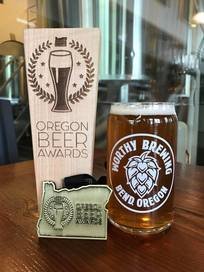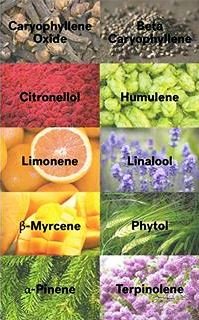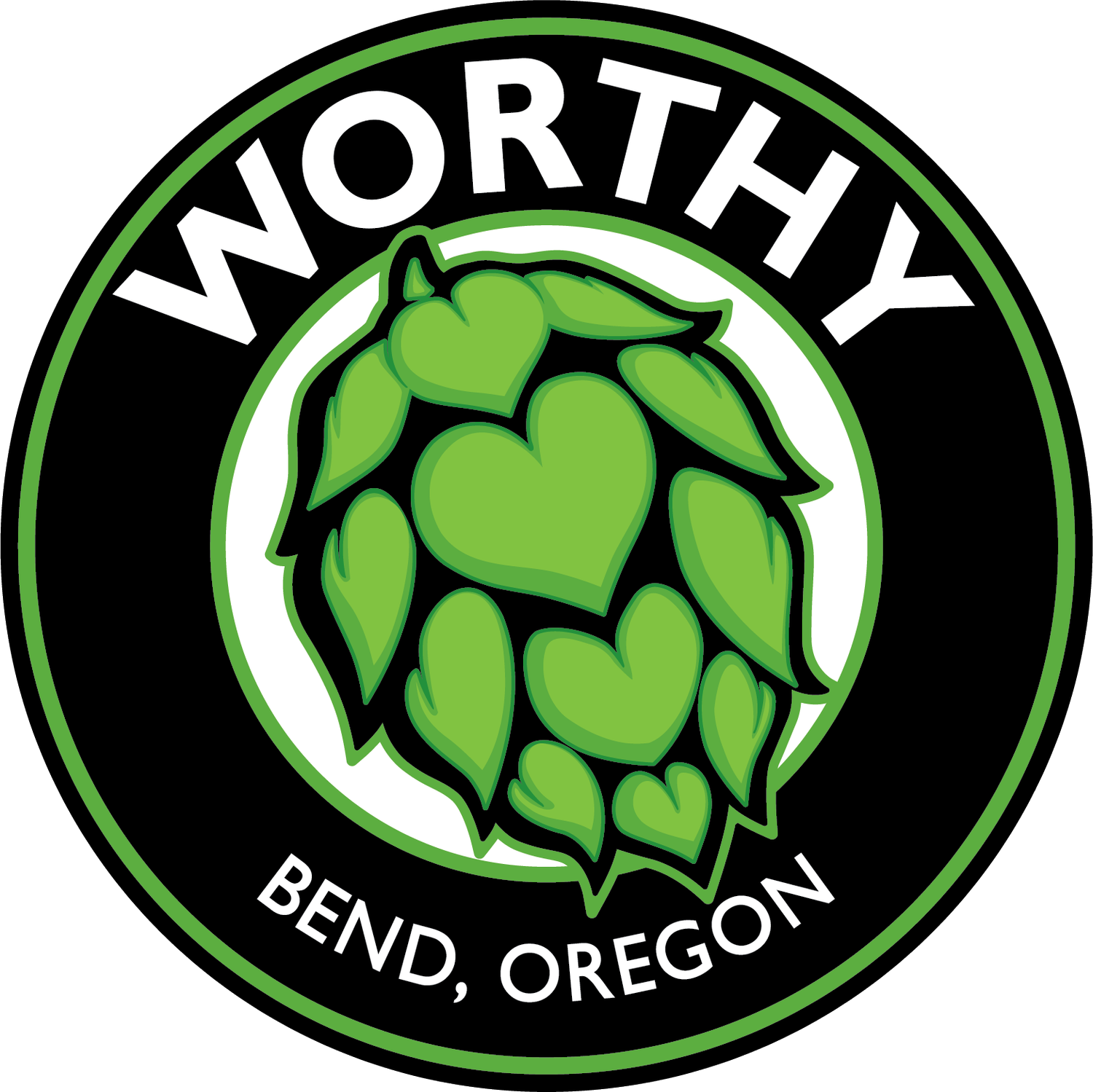Strata: Terpilicious, Terpiffic and Terpendous
Mon, 06 Mar 2017 18:55:00

Why does the new hop, Strata (aka, X-331) smell like pot? Virtually every brewer I’ve met who’s rubbed and sniffed it uses wordslike dank, stanky, skunky, musky or resinous to describe it, usually with a bemused grin.
Where Is That Smell Coming From?
The short answer is that pot and hops share many of the same essential oils, or terpenoids, from which the aroma (and flavor) springs. That’s hardly big news. Everybody in Oregon knows hops (aka, Humulus lupulus, the twining herb) and pot (aka, cannabis, the erect herb) are two genera within the same Cannabacae family.
But what are these shared essential oils? What are these pleasantly malodorous terpenoids? The answer to that is more complicated, so we’ll have to resort to educated guesses sprinkled with a few factoids.
First, what do we know? We know that Strata was born in Corvallis, where the air is thick with ancient, rich and hearty pollens, spores, molds, dusts and danders. Strata’s Momma is Perle, a German born hop. We don’t know who the Daddy is, because Perle was pollinated naturally. He just swooped down from the sky like a hawk. I suspect the Daddy is a Rogue Oregon hop stud, as the competition to procreate in the Valley is fierce. Lots of up and coming hop pollens competing with the native wild types. Only the strongest survive.
Why Did We Decide to Use These Hops?
We chose to advance X-331 from the OSU research plots to the commercial farm plots because she was vigorous, highly disease resistant, and powerfully pungent (strong odors can repel insects, a few mammals, and thwart certain fungi). When we did the rub and sniff on X-331’s big oily cones, my partner Jim and I were transported back in time.
The aroma took us back to those carefree, long days of Summer when we explored the woods around Corvallis in search of fruit, frogs and arrowheads. We remembered this omnipresent tobacco-ish fragrance, which to a 12 year old kid was irresistible.
It just had to be dried, mashed up and tamped down in a pipe. I’m speaking for myself here (Jim’s Dad was a Coach, mine was a biology student). We later found out that that weedy aroma came from Indian Tobacco, which for the natives was used to cure anything from a sore lower back to demonic possession.
Did we advance X-331 because we had notions of breeding a sort of “hopijuana.” Not exactly. Mostly, the brewers -- a rebellious lot -- who sniffed it gave it the thumbs up. We deferred to them. Which raises a whole new set of questions – namely, how can a hop’s aroma and flavor be so radically different? (We’ll leave that thorny question for another time). At the time we were doing our hop selection, we didn’t know with any certainty that when brewed, the flavor profile would center more on it’s fruity, citrusy character (how the brewers lept to this conclusion remains a mystery to me).

So, back to the story, we know that in general a hop has over 500 essential oils and about 85% of those oils are comprised of myrcene, humulene, and caryophyllene. Cannabis at least 200 known terpenes. The principal terpenes that are responsible for that distinctive skunky– funk include myrcene, caryophyllene, pinene, limonene, and linalool.
Below is a chart that in very summary fashion attributes odors/aromas to specific essential Oils (Chart 1). You’ll notice that these oils, which are prominent in pot, favor the “woody,” “piney”, “earthy” and “herbal” spokes of the aroma wheel. Granted, we’re entering the inexact science zone, as aromas can vary as widely as the colors of a rose.
Chart 1. Essential Oils and Related Odors/Aromas Common to Pot and Hops
caryophyllene
» woody, earthy, woody
citronellol
» citrusy, fruity, herbal *
humulene
» woody, piney, earthy, tobacco
limonene
» citrusy, orange, piney
linalool
» floral, orange, woody *
myrcene
» musky, green, resinous, piney, peppery
B-pinene
» spicy, piney, woody, green
M-Heptanoate
» fruity, green, peppery, floral
Terpenoil
» lime, coriander, marjoram
(*used as an insect repellant)
What do we know about the terpenes in X-331? Not surprisingly, we haven't done any direct comparisons between X-331 and a pot varietal. We have done basic chemistry on X-331, mainly to compare it against it's mother, Perle, and the aroma workhorse, Cascade. We gathered essential oil data on X-331 at two different Willamette Valley farms in the same year, as well as Perle and Cascade for benchmarks, also the same year and terroir. We only evaluated 24 oils (again, out of well over 300 – it’s expensive!).
In the quest to discover the source of that terpy stench (said lovingly) in both pot and X-331, I looked mainly at the oils that are common to X-331 and cannabis (generically). As you can see from Chart 2, Strata had a substantially greater expression of many of the terpy oils than it's noble Mother Perle. The same goes for Strata when you stack her up against Cascade, which is regarded as the Grand Daddy of American born aroma hops.
It's evident from the research that Strata's Rogue Hop Daddy had some seriously stanky juice.
Chart 2. X-331 Key Oil % Content Compared to Perle and Cascade
2.1. X-331 vs. Perle*
Myrcene
~2.5 x greater
Trans-Caryophylene
~3 x greater
Linalool
~2 x greater
B-pinene
~3 x greater
Limonene
~2.5 x greater
M-Heptonoate
~2.5 x greater
2.2 Comparing X-331 with Cascade*
A-Humulene
2.4 x greater
Linalool
2 x greater
Trans-Caryophyllene
5 x greater
Terpeniol
2.7 x greater
(*I took the highest reading from Farm A and Farm B for X-331 and divided by the number for Perle and Cascade, respectively. Warning: my math may not be that good!).
You have to wonder who that Rogue Oregon Hop Stud is. Where did he come from? How long has he been tomcatting around? Of all the pollens swirling above the Valley, why did nature select him? What does he impart that gives his offspring a survival edge? Does he have cannabis in his family tree? If so, how long ago did he branch out?
We’ll never know, which gives us license to fantasize about his reproductive prowess and evolutionary fitness. One thing for sure, unlike bad pests, he wasn’t easily repelled.
How Do We Describe It?
So we may have a clue as to the source of the dankness in Strata. But, now the really important question. Is our nation ready to accept a hop that must truthfully be described on the rub as “dank?” We have little doubt our friends in Colorado and here on the West Coast will regard the descriptor as a high praise. And concert-goers everywhere should appreciate the association (it’s not rock n roll if the arena doesn't light up when the lights go down). As the laws catch up with culture, dankness is certainly becoming more acceptable (embrace the stank!).
And yet, let’s face it – nose-wincing words like dank, skunky, stanky, cat piss, and “good sh**” may work well for selling pot. Softer words like weed, ganja, green, grass have decent potential for cross-over descriptors.
But I’m thinking we need a new vocabulary that’s both accurate and honorific. Both weeds share resins rich with terpenoids. The word terpenoid has a clinical, medicinal and scientific connotation. Terpenoids are figuratively the sh** house door on the cat house. All stench starts there. The root – “terp” – is the building block for all sorts of fun. It’s a word, in my view, that can help build a bridge between pot and hops.
And so, let me offer, for your consideration, a number of pot-inspired neologisms to characterize Strata, the stanky new hop darling of the Willamette Valley. Terpilicious. Terpendous. Terpiffic. Terpiluscious. Terpasmic.
All this term talk has made me thirsty. I need a Strata Sphere IPA.
BGL
3/6/17

